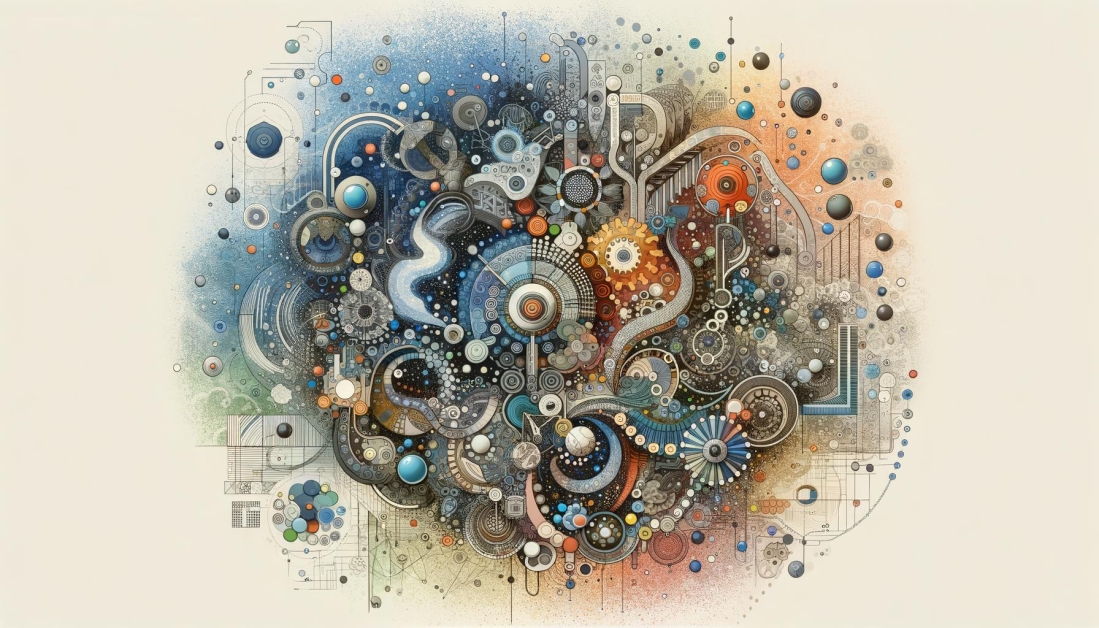This Is a Glimpse of the Future of AI Robots
This Is a Glimpse of the Future of AI Robots
As we stand on the precipice of a new era defined by technological advancement, the realm of artificial intelligence is rapidly evolving, leaving us to ponder what the future holds. Picture a world where robots, once mere figments of science fiction, become integral members of society—assisting in our daily lives, revolutionizing industries, and enhancing our understanding of what it means to coexist with intelligent machines. This article invites you to explore the exciting frontiers of AI robotics, where innovation meets imagination. Through a kaleidoscope of possibilities, we will examine the emerging trends, groundbreaking developments, and the implications these advancements hold for humanity. Join us on this journey to uncover a glimpse of the future of AI robots—a future that is both thrilling and uncertain, where the boundaries between man and machine blur, challenging our perceptions of intelligence, labor, and companionship.
Exploring the Evolution of AI Robots in Daily Life
The integration of AI robots into our daily routines has transformed the way we interact with technology and each other. From household helpers to advanced companions, these machines have evolved remarkably, showcasing their potential in various sectors. Today, we see them as healthcare aides, educational tools, and service providers. With capabilities such as real-time data analysis, emotional recognition, and adaptive learning, AI robots are not just fulfilling tasks but also forming connections with users, driving meaningful engagement in diverse environments.
As we look ahead, the future of AI robots appears increasingly collaborative. Imagine a world where your AI assistant not only organizes your calendar but also interprets your emotions and offers tailored solutions to enhance your well-being. Consider the possibilities that lie with smart home robots that proactively manage energy use, or robotic learning companions that adapt to individual student needs in classrooms. This revolution in AI technology is encapsulated in the table below, illustrating some of the exciting trends shaping our interaction with robots:
| Trend | Description |
|---|---|
| Personalization | Robots that learn user preferences for optimized interactions. |
| Emotion Recognition | AI capabilities to understand and respond to human emotions. |
| Collaborative Interfaces | Robots that engage with users in a conversational manner. |
| Proactive Support | Anticipating needs before they are explicitly communicated. |

The Role of Emotional Intelligence in Future Robotics
The integration of emotional intelligence into robotics represents a groundbreaking shift in the way humans interact with machines. Robots equipped with advanced emotional intelligence will have the ability to understand, interpret, and respond to human emotions, creating a more seamless and intuitive user experience. This capacity enables them to engage in activities that require empathy and sensitivity, such as assisting the elderly, providing therapy, or enhancing customer service. By recognizing emotional cues and adjusting their behavior accordingly, these robots pave the way for establishing trust and rapport, which are critical for effective human-robot collaboration.
In the future, as they evolve, emotionally intelligent robots will likely possess a range of skill sets that will enhance their functionality across various sectors. Some key attributes include:
- Emotional Recognition: The ability to detect and assess human feelings through facial expressions, voice modulation, and body language.
- Contextual Awareness: Understanding the surroundings and the situation to offer appropriate emotional support.
- Adaptive Responses: Changing their behavior based on the emotional state of the user to foster better interactions.
Below is an overview table showcasing potential applications for emotionally intelligent robots:
| Sector | Application | Benefits |
|---|---|---|
| Healthcare | Companionship for patients | Reduces loneliness and promotes emotional well-being |
| Education | Teaching assistance | Encourages student engagement and emotional learning |
| Customer Service | Support agents | Enhances customer satisfaction and loyalty |

Harnessing AI for Sustainable Development and Innovation
Artificial intelligence is set to redefine the landscape of sustainable development by unlocking innovative solutions to some of the world’s most pressing challenges. As John Kerry aptly stated, “50% of the carbon reductions needed to get to net zero will come from technologies that have not yet been invented.” AI can facilitate this transformation through its ability to analyze vast amounts of data, optimize energy use, and enhance resource management. By leveraging AI, industries can implement smarter practices that not only reduce waste but also promote sustainability across various sectors, from agriculture to energy production.
Moreover, the integration of AI into daily operations can propel companies toward achieving their sustainability goals more efficiently. For instance, automated systems can monitor and optimize supply chains, minimizing transportation emissions, while predictive analytics can forecast environmental impacts before they occur. As organizations harness the power of AI, key areas of focus include:
- AI-driven renewable energy solutions.
- Automated waste management systems.
- Smart agriculture technologies for resource conservation.
- Enhanced urban planning through data-driven insights.
This concerted effort in utilizing AI not only champions ecological responsibility but also fosters a culture of innovation, ensuring that future generations can thrive in a sustainable world.

Navigating Ethical Considerations in Advanced Robot Integration
As we stand on the brink of integrating advanced robotics into daily life, it is critical to address the ethical considerations that accompany this technological leap. Transparency and accountability must be at the forefront of these discussions, ensuring that stakeholders are aware of a robot’s capabilities and limitations. Furthermore, respect for privacy is paramount; the data collected by AI systems should be safeguarded against misuse and unauthorized access. Regular assessments should be in place to evaluate how these robots affect human life, considering factors such as employee roles, societal impact, and the potential for bias in algorithmic decision-making.
Emerging technologies also invite a deeper reflection on human-robot relationships. Key considerations include the potential for emotional attachment, which may blur the lines of ethical boundaries. To address this, developers must clearly define the operational parameters of robots, ensuring they remain tools to assist rather than replace human interaction. Additionally, it is vital to foster an environment of continuous dialogue among developers, ethicists, and the public. This collaboration is essential to cultivate a set of ethical standards that can adapt to ongoing technological advancements while protecting user interests and societal values.
The Way Forward
As we peer into the future of AI robots, it’s clear that we stand on the brink of a new era—one defined by the extraordinary potential of our synthetic companions. From enhancing daily tasks to revolutionizing industries, the fusion of human ingenuity and machine intelligence promises a world replete with innovation and possibilities.
Yet, amid this technological advance, it is essential to remember the importance of our ethical considerations and the responsibilities we bear as creators. The narrative we build around AI robots will ultimately shape their roles in society and our relationship with them.
As we navigate this uncharted territory, let us embrace the challenges and opportunities that lie ahead with an open mind and a conscious heart. The future of AI robots is not merely a reflection of what they can do, but also a mirror of who we aspire to be. Together, we can ensure that this glimpse into tomorrow leads to a world where technology serves to enhance the human experience, fostering a harmonious coexistence between man and machine. The journey has only just begun, and the innovation that awaits is limited only by our imagination.






